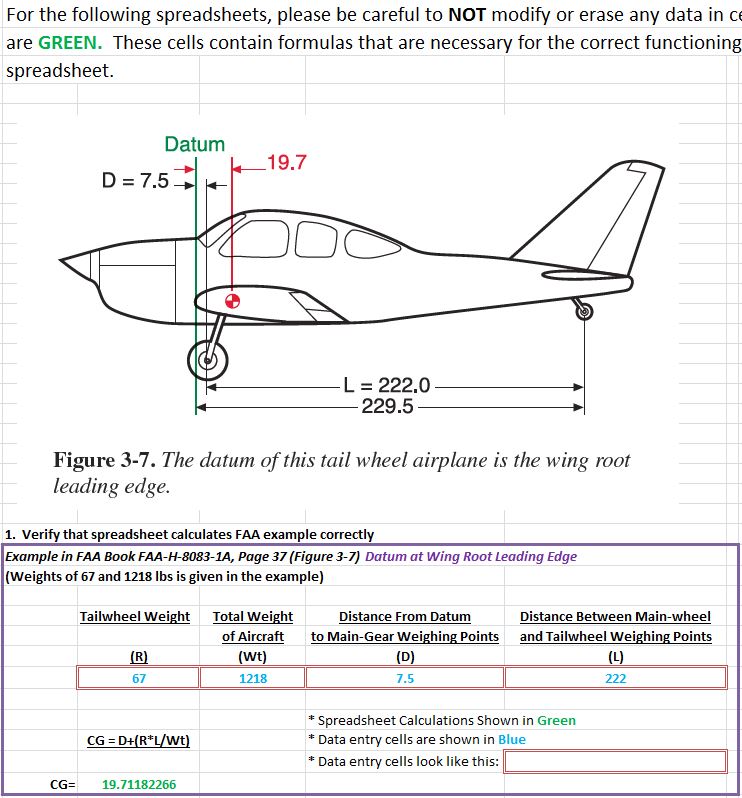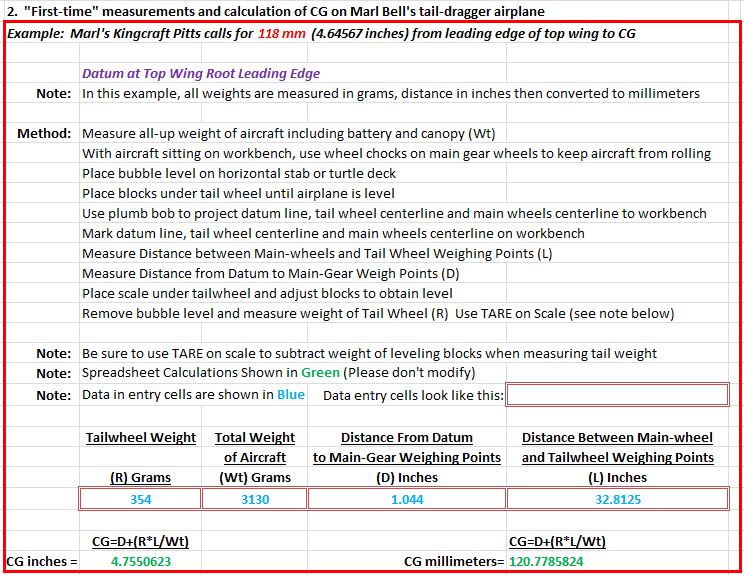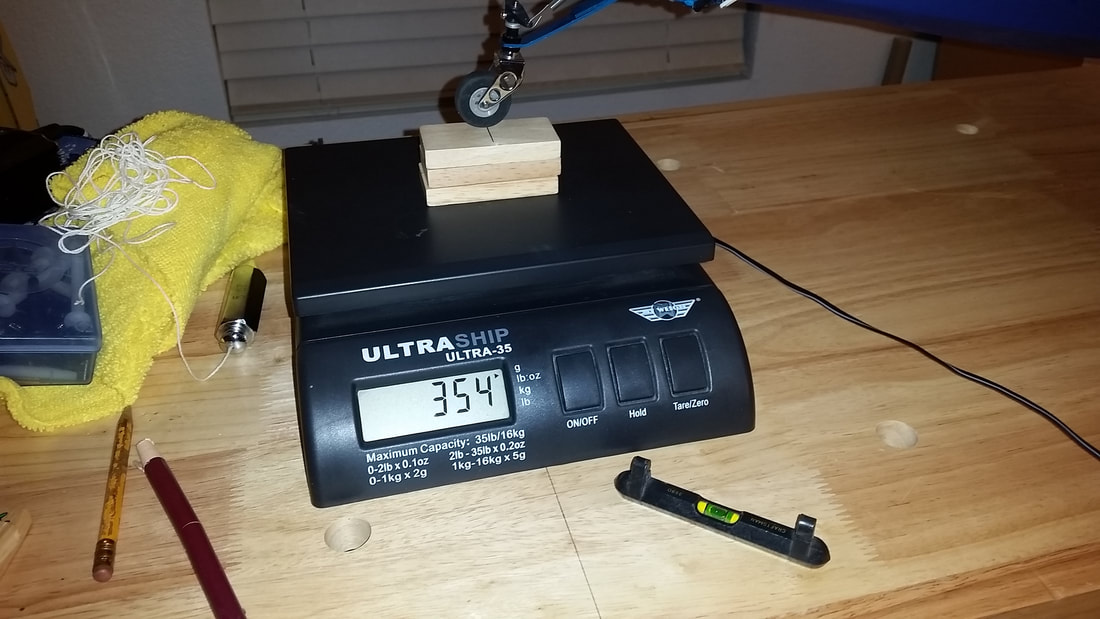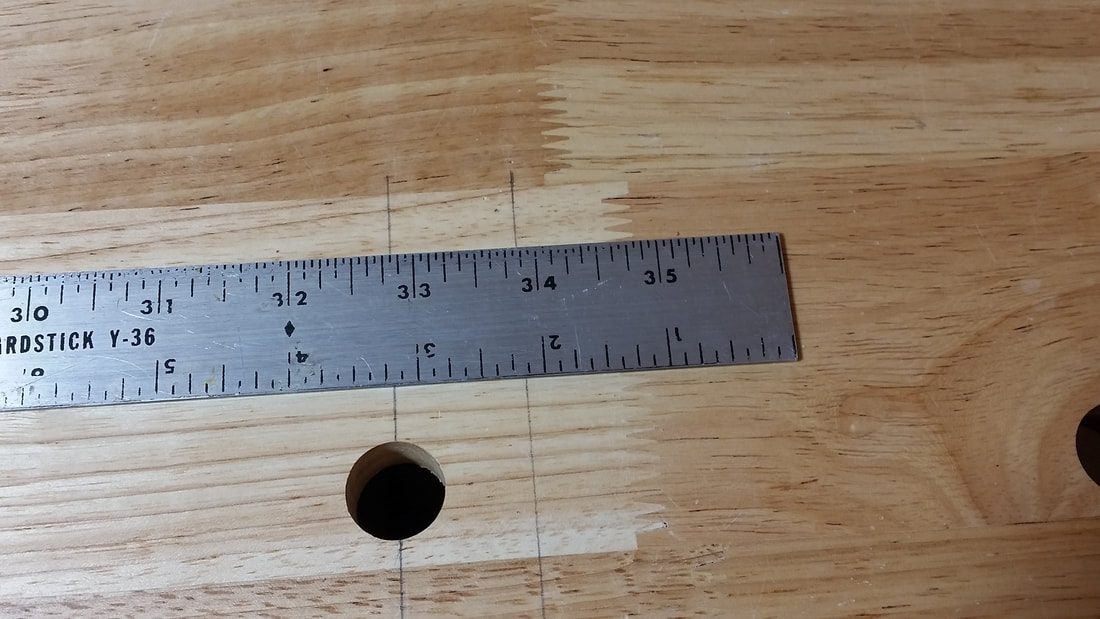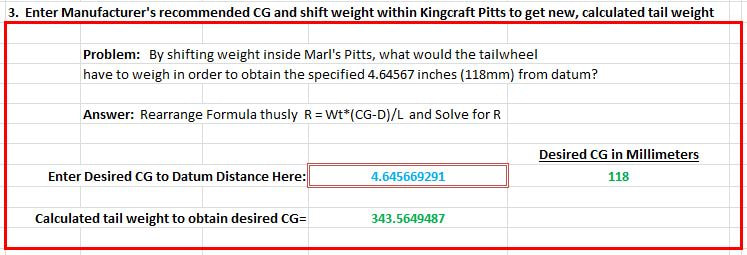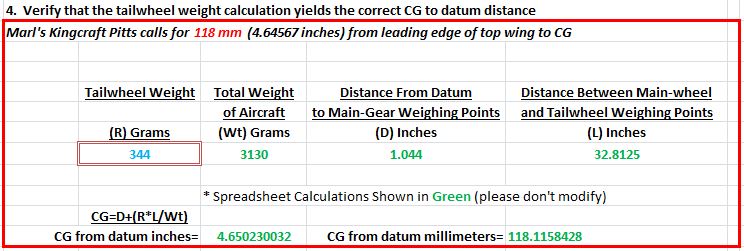Method for Balancing Your R/C Aircraft Using the
FAA's Aircraft Weight and Balance Handbook
(Tail Dragger)
By: Marl Bell
As to why I chose to detail this particular method of measuring CG on a R/C airplane, I encourage you to first checkout the balancing method I describe for nose wheel aircraft here. Oh good, you're back! As mentioned in that article, I utilized simple formulas found in the FAA's Aircraft Weight and Balance Handbook. Here are the four simple formulas that you will find in the FAA Handbook:
In this article I will show you how I used my spreadsheet to calculate where the CG is on my Kingcraft Pitss S-2B ARF. Because the datum is forward of the main wheels on my Pitts, I will be using formula number three (3) above.
The “datum” is the reference point from which distance measurements are made. In our models, the datum is often defined as the leading edge of the wing at the wing root. In ARF models, the location of the CG is often measured back toward the tail from the datum. In my Pitts, the manufacturer has specified that it is 118 millimeters back from the datum.
|
Here is a sample calculation taken from the FAA Aircraft Weight and Balance Handbook. Just like many of our models, the datum is located at the wing root leading edge. The calculated CG location in this example is 19.7 inches from the datum. Below is a screenshot (1) of my spreadsheet, the calculation of which agrees with the example in the FAA Handbook: 19.7 inches.
Now it’s time to apply the formula and spreadsheet to my Kingcraft Pitts S-2B! Below, is a screenshot (2) from my spreadsheet which I used to measure/calculate CG on one of my airplanes:
Here are some photos of the method described in screenshot (2) above.....
|
As you can see from the photo to the left, the tail wheel weight is 354 grams. Entering that value into the spreadsheet, along with distances (D) and (L) yields a CG of 120.78 millimeters from the datum. Since we are trying to achieve a CG of 118 millimeters, we will now use the spreadsheet (screenshot 3) to calculate what the tail weight needs to be in order to achieve 118 millimeters from the datum.....
|
|
As you can see from entering 344 grams into the spreadsheet screenshot (4) above, the correct CG of 118 millimeters from the datum has been achieved! Remember that you want to be consistent with the units you choose. I made all my distance measurements in inches and all weight measurements in grams. For this example, I converted the manufacturer's suggested CG specification of 118 millimeters to 4.64567 inches. That way, all calculations were in inches. Finally, I converted back to millimeters to see how close I was able to get to the factory CG specification of 118 millimeters.
Converting inches to millimeters, simply multiply by 25.4. When converting from millimeters to inches, simply divide by 25.4 The above values are examples using my aircraft. If you'd like to enter values from your aircraft into the spreadsheet, you can do that in section 5 (no screenshot). You might want to keep the values I entered at (1), (2), (3) and (4) in the spreadsheet for future reference. Also, I left the spreadsheet cells "unprotected" so that you can see what's being calculated. |
So I need to shift the battery weight forward in the Pitts to make the tail wheel weight decrease from 354 grams to 343.56 grams.
It took me three attempts of shifting the battery inside the Pitts to get the tail weight just right. I was able to get a tail wheel weight of 344 grams.
|
I verified that the calculated location for the CG on my Pitts S-2B agrees with a simple balance machine. I used the Hobby King Balancer to verify my calculations. I believe it is much sturdier and accurate than the one made by Great Planes. I was not surprised that it balanced perfectly at the calculated 118 millimeters!

